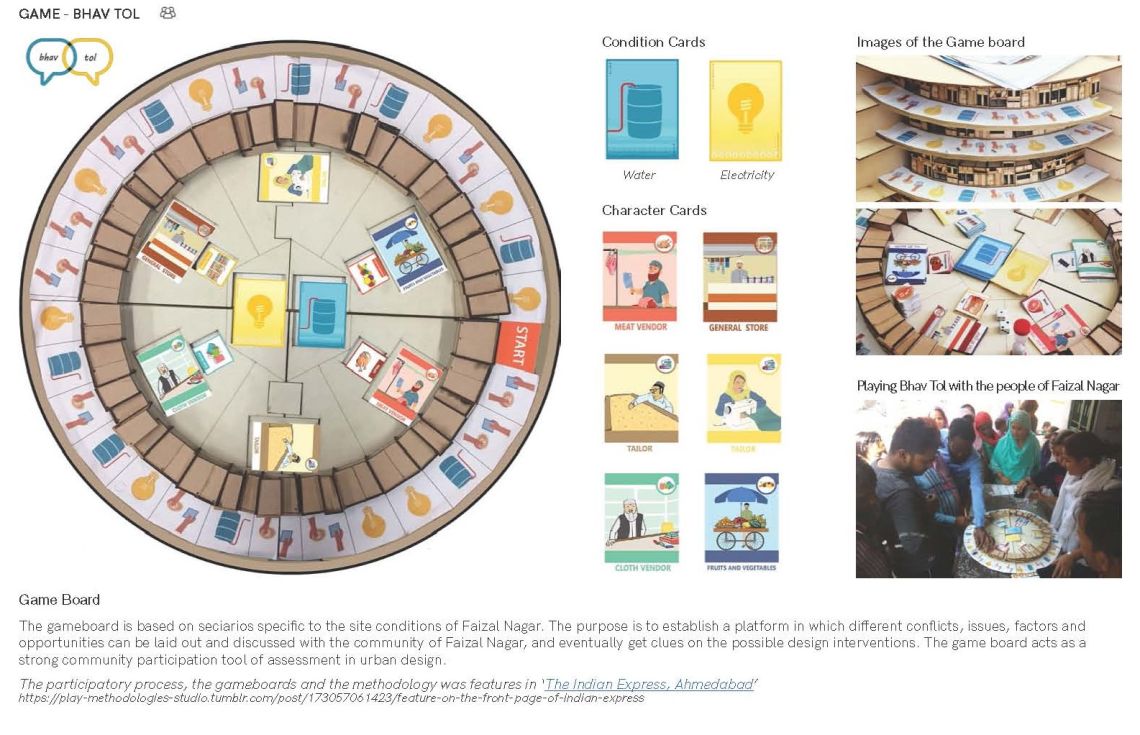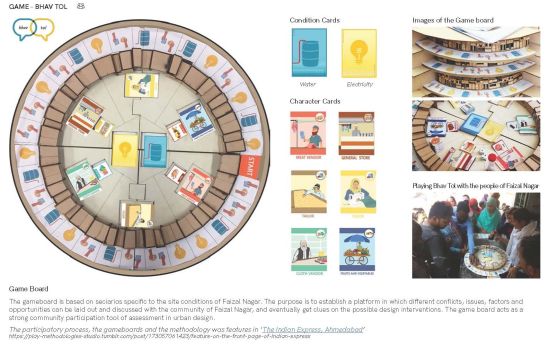What’s in a game?

What’s in a game?
If one were to walk down Carter Road in Mumbai any day of the week, you would see pairs of people sitting by the sea and playing rounds of chess. Games are an important part of the social realm that makes our cities. Even in the local trains of the city, you can often see groups of women sitting and playing a shared game of ludo on their respective phones, especially at the end of the day while commuting back home from work. And while the social and cultural impacts of games are well-studied and documented in various cultural contexts, I wonder about the potential that games have, to bring people together in one space, in one shared experience, strategizing and reflecting over the one board that they are peering and pouring over.
Everyone likes games. Everyone plays games. We associate games with periods of leisure and when we are letting loose, be it board games, card games, video games, or even spoken word games. But what if games signified more than that? What if their purpose was changed from those of acts of pleasure and entertainment, to aid in methods of research? Research, not as a post-facto analysis of the game and its social and cultural impacts, but games designed such that they themselves become the means to conduct research. We would like to explore the possibility that games could have to research about the unspoken and often, unrealised, factors and challenges that influence the commuting patterns and choices made by commuters in the city. Which factors does each individual commuter prioritise over the other- affordability over comfort? Time over affordability? Responsibilities or chores over time? A game, in which players are required to actively make these choices, would have the potential to inform researchers such as us, to better study how people travel in the city.
To implement any kind of change in the urban sphere, participation from the community is of paramount importance. Yet, most people have more urgent priorities and more appealing options for the limited free time that they can take out of busy schedules. Could games then be an entry point to generate interest, encourage more participation among communities and be used as an educational tool for the issues at hand? The game acts as a metaphor for reality. It translates daily life into a space of simulation, where each player can experience themselves as a performer and their actions as performances. It becomes a lived experience, instead of an experiment, with a plot and roles to fill in. Games generate interest, curiosity, and revelations in its players and the setting in which it is played becomes a part of the scene.
A parallel can be drawn between the commute in cities every day with a game. It is a challenge that involves navigating through traffic, hordes of people, the weather, on-going construction work, political rallies, and the everyday chaos of the city. We all choose, whether consciously or subconsciously, how to reach from one place to another- and many of these choices are results of habit, compulsion, convenience, etc. To reflect on what drives us to make the choices that we do and what these choices mean for the city that we live in, brings us one step closer to being more conscious and responsible citizens. One possible means to do this is to pack the experience of the city and the associated travel into one board game. If the game incorporates intrinsic motivation, derived from enjoyment of the activity of playing itself, instead of relying on sources of extrinsic motivation which are drawn from incentives of rewards- tangible or otherwise, then such a game could be incorporated into public participatory research methods. Karl Kapp, who works on the design, development, delivery and evaluation of instruction in corporate, educational, and governmental environments, identified three ways to design behaviour change into learning games- the freedom for players to do what they want in an open environment, the freedom to fail, and rapid feedback for success or failure, in the game.
The game, which will involve players having to choose what mode of transport(s) to use to complete a set of tasks. They will have to do so after they have been dealt a set of hands determining the circumstances under which they are to operate in, including but not limited to monetary resources, time, weather, blockages, etc. An example could be reaching a destination, such as a formal event or a party, in the least amount of time possible, while also maximising comfort during rush hour traffic. The net (negative or positive) effect that their choices sum up to, in terms of carbon emissions, will be tallied on the side, which will then determine the next set of hands dealt to them, framed in terms of climatic or policy interventions. At the end of the game, the player with the highest positive tally will be declared winner. In the case of a single player, a win or loss will be declared after comparing the net result with the score at the start of the game.
The objective of the game is twofold. One, for the game to represent the decisions of the players which make evident their social and cultural contexts, i.e., to inform and realise the players of the factors that affect the choices that they sometimes subconsciously make and the implications that these choices have in the real world. And two, to act as a feedback loop to identify the kinds of upgrades that they would like to see in the transport infrastructure that they use. The overall performance encompasses the choices that the players make to follow the path of their choice and the specific set of meanings that they wish to project. The game allows the developers and organisers to construct an analysis of values and subjectivities based on the performances that unfold over the play duration. The narrative that is created in games is abstracted from daily experiences, and later be recovered to deconstruct and analyse, to understand the challenges of commuting in their daily lives.
References
https://www.worldbank.org/content/dam/Worldbank/document/urban/places-we-live-competition-Lerner.pdf
https://ludogogy.co.uk/article/board-games-for-participatory-research/
https://ludogogy.co.uk/article/unlocking-behavioural-change-with-games-based-learning/

